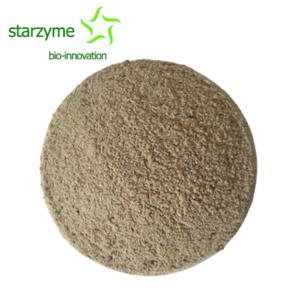The action mechanism of compound enzyme in fish feed
The action mechanism of compound enzyme in fish feed
1. Destroy the plant cell wall, make the enzyme fully contact the substrate, and improve the digestion and absorption of nutrients. Commonly used vegetable fish feed ingredients contain a large amount of non-starch polysaccharides (such as arabinoxy).
Sugar, β-glucan, mannan, cellulose, pectin, etc.), which are components of plant cell walls. Fish itself cannot secrete enzymes that degrade non-starch polysaccharides, resulting in equivalent
The proportion of nutrients is excreted as feces with non-starch polysaccharides. The addition of non-starch polysaccharidase can destroy the plant cell wall, expose the nutrients in the cell, and be contacted and digested by amylase and protease.
Improve the absorption and utilization of nutrients, mannanase can also significantly change blood sugar levels and promote sugar metabolism.
2. Hydrolyze the non-starch polysaccharides to reduce the viscosity of the contents of the digestive tract. The non-starch polysaccharides in the plant feed can be partially dissolved after entering the fish digestive tract to produce viscosity and make the contents of the digestive tract
The viscosity increases, forming a physical barrier to endogenous enzymes, thereby affecting the digestion and absorption of nutrients. Enzymatic hydrolysis of non-starch polysaccharides in diets can degrade these non-starch polysaccharide macromolecules into monosaccharides.
And oligosaccharides, reduce the viscosity of the contents of the digestive tract, increase the contact area between endogenous enzymes and nutrients, and improve the digestion and utilization of nutrients.
3. Eliminate anti-nutritional factors and change the distribution of flora in the digestive tract. Vegetable protein feed materials such as soybean meal contain anti-nutritional factors such as protease inhibitors and lectins, which can be combined
Endogenous protease and inactivate it, thereby reducing the digestibility of feed protein, and changing the distribution of the intestinal flora, causing a large number of harmful bacteria to multiply and affecting the health of fish. Add protease
Enzymes and other enzymes can eliminate these anti-nutritional factors, improve the digestion and absorption of protein, and improve the health of fish.
4. Supplement the lack of endogenous enzymes and improve the effect of the animal's own intestinal enzymes. Due to the digestive physiological characteristics of fish (the digestive organs are simple and short; the digestive glands are underdeveloped and the digestive enzyme activity is low;
The short residence time of food in the digestive tract is determined by fish's low digestibility of feed protein and starch, resulting in waste of feed nutrients. Adding protease, amylase, etc. to fish feed can supplement
To fill the deficiency of these endogenous enzymes, increase the digestion and absorption of protein and starch, increase the growth rate of fish, and reduce the feed coefficient.
After the plant cell wall is treated with non-starch polysaccharidase, the nutrients in it are fully released (pictured)





